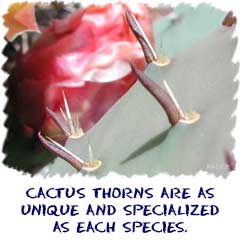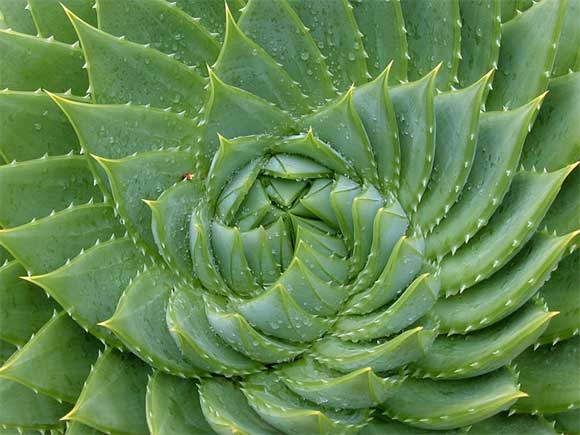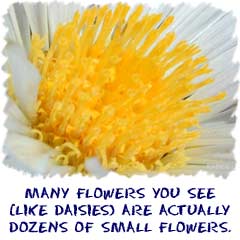
Different Parts = Different Advantages
 Obviously, not all plants look the same. They have different flowers, stems, and even root structures. Extreme examples have given some plants big advantages. These advantages have let them settle in new environments and become more successful.
Obviously, not all plants look the same. They have different flowers, stems, and even root structures. Extreme examples have given some plants big advantages. These advantages have let them settle in new environments and become more successful.
Specialized Leaves
What kinds of leaves are there? What kinds aren't there? There are thick ones for storing water as in succulents. There are long twisting vine-like leaves that can wrap around and dig in for support as in grapes. There are also thorns. Nothing says, "Don't eat me" like a bunch of sharp thorns on your branches.
Focus On: Succulents
Even though succulent species are flowering plants, we thought it might be nice to add an example of plants that are able to survive with little water. Instead of leaves, succulents have fleshy structures that efficiently store water. Many succulents have also developed thorns for protection. Many animals in arid environments feed on succulents because they provide a source of water in their tissues. This image displays a spiral pattern that several succulents have developed. Their growth is not a random growth like a tree or weed. They grow in specific geometric patterns. |
Flowers
Flowers have developed such a wide variety. That variety is often dependent on what kind of creature helps out with the pollination. If I am a big insect, I will be looking at plants with big flowers. If I am a tiny little bug, I might live my whole life inside a flower. There are also a variety of colors that attract different insects and animals.
Stems
Stems are a good place to store water. It's very efficient to develop a big protected area. Think about a barrel in hot areas where water is scarce. Enter a cactus. All stem and trunk. No leaves. Having no leaves means very little evaporation on hot days. Other extremes are plants with no stem. They could grow one, being vascular plants, but they have found it to be an advantage to stay near the ground. Vines are another extreme.The bark of a tree or plant can also perform a specific function. Corks in wine bottles are actually from the bark of a tree (cork tree). Some bark has been designed to peel away as the tree grows. Other types of bark are very thick to protect the plant from animals and insects.
Epiphytes - Specialized Roots
Not all plants even live in the ground. Some specialized plants called epiphytes actually live on the side of other trees or on rocks. They are able to collect water themselves but do not use roots to gather it up. Their roots have been specialized to dig in or grab on to the larger object. They don't always hurt the trees; they just hang out on the outside. Epiphytes can include some seedless species, bromeliads, and orchids. There are also epiphyte species that can grow very large and even break tree limbs. They can suck nutrients away from the tree and weaken it over time. Several ficus species are killer parasitic epiphytes.Related Video...
Climate Change and Peanuts (USDA Video)
Encyclopedia.com (Cacti):
http://www.encyclopedia.com/topic/Cacti.aspx
Wikipedia (Epiphyte):
http://en.wikipedia.org/wiki/Epiphyte
Encyclopædia Britannica (Epiphytes):
http://www.britannica.com/EBchecked/topic/190131/epiphyte
Encyclopædia Britannica (Cacti):
http://www.britannica.com/EBchecked/topic/87832/cactus



